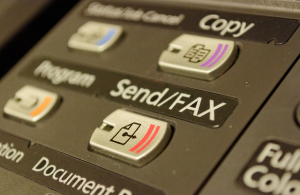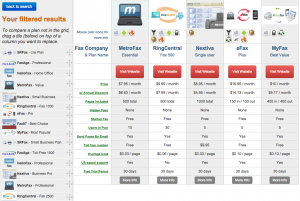Staying Out of Porting Purgatory: What You Need to Know if You Want To Keep Your Phone Number

Finding yourself suddenly without your business phone or fax numbers because of a porting pitfall can be more than an inconvenience: imagine having to change numbers on all of your printed business material, from business cards to brochures; updating websites; reaching out to all your contacts; and trying to remember everywhere you’ve listed your numbers. Then there are contracts, accounts, and other filings that you will have to go back and update if you are forced to get new numbers. Avoiding that is worth reading some fine print and understanding how to port a number from a VoIP or online fax carrier before you need to do so.
In these days of mobile technology, your VoIP phone or online fax number is more than just a convenience; it is a vital part of any business’s communications, whether you’re a sole proprietor or part of a company with 100 employees. It’s easy to take for granted that you’ll always be able to keep our phone and fax numbers, since many providers allow you to port an existing number in or out to a new service.
But what happens if you get a phone or fax number with a VoIP or online fax provider that doesn’t allow you to take that number with you when you change to a new provider? While number portability is common, it’s not a given, and in fact some companies have steep penalties for taking a number with you to another service. Others make porting possible, but only if you follow an exact series of steps or agree to pay a fee.
The Federal Communications Commission (FCC) and Congress first mandated number portability in 1996, and that means that all telecommunications carriers must allow number porting. However, some carriers refuse to port out numbers by claiming that they’re not telecommunications carriers, and that they therefore aren’t subject to number porting rules.
Carriers that have successfully made that claim, including online fax companies owned by J2 Global, Inc., have done so by stating that their cloud services exempt them from U.S. telecommunications services regulation. In other words, even though they transmit information over telephone lines, the service they provide can be classified as “information services” instead of “telecommunications services.”
“Ports involve a ‘losing carrier,’ and most of the pitfalls arise around the losing carrier not correctly responding to port-out requests, or delaying, or asking for money,” says Andrew Benton, CEO of Charge. “There is a lot of fine print about porting that’s never read when first choosing a service provider. It pays to be careful and ask questions to document what a carrier’s porting procedures are before establishing service. Of course, the losing carrier doesn’t have any incentive to assist you when switching service. This is an obvious source of issues.”
Benton says that in order to port most non-mobile numbers – including “virtual” numbers from VoIP providers – you need a Letter of Authorization, often provided by the new carrier you’re trying to port into.
For instance, Nextiva and RingCentral are among those whose porting policies require a LOA in order to port a number out. Others, like Google Voice (a free service) require you to unlock your number before porting it out, and pay a $3 fee.
Almost all providers require you to keep your number active while going through porting, another detail which can be easy to overlook. Paying attention to details like the wording in the LOA and keeping the account active can make or break a porting experience.
“Porting is really a straight forward process as long as you follow the carriers guidelines,” says David Xiong, vice president of technology with JDigital Voice. “Most of the time, that includes making sure the phone is currently active and not disconnected and making sure you correctly spell the name of the business on the LOA form to match exactly the invoice. That is the BIGGEST problem people have. You MUST make sure you follow the spelling of the name EXACTLY. Any character wrong and it poses a potential to get rejected. Every period, comma or LLC extension must match exactly. Not following these two guidelines will get your port request rejected.”
John Kinskey, founder of AccessDirect, Inc., says number porting in general can be an arcane and often confusing process “If you’re ever having trouble getting a number ported, I really recommend contacting a supervisor and explaining, plainly, what you are trying to do. Porting numbers doesn’t come up enough where frontline customer service is fully trained to answer those questions.”
Some providers simply don’t allow porting at all. J2 companies, which include online fax providers eFax and MyFax, put language in their customer agreements about not porting numbers out (in all caps for added emphasis!): “YOU FURTHER UNDERSTAND AND AGREE THAT YOU ARE NOT THE OWNER OF ANY eFAX NUMBER ASSIGNED TO YOU BY j2 GLOBAL. OWNERSHIP OF ANY SUCH eFAX NUMBER IS VESTED SOLELY IN j2 GLOBAL…YOU ARE EXPRESSLY PROHIBITED FROM CAUSING OR ATTEMPTING TO CAUSE THE eFAX NUMBER ASSIGNED TO YOUR ACCOUNT TO BE TRANSFERRED TO ANY OTHER SERVICE PROVIDER, TELEPHONE CARRIER OR ANY OTHER PERSON OR ENTITY.” What’s more, if you do port a number from a J2 carrier to another service, whether intentionally or by accident, J2 will automatically charge your credit card $500.
Benton says that since carriers like eFax do not consider themselves telecommunications carriers, they’ve been able to refuse to port out numbers. Whether or not that would hold up in court remains to be seen, he adds.
The bottom line is that it pays to do some advance reading before picking a VoIP or Internet fax provider. Chances are that you won’t stay with the same provider forever, and if you don’t want an unpleasant and expensive surprise when it comes time to change to a new service, you should know your options before committing to a provider.



